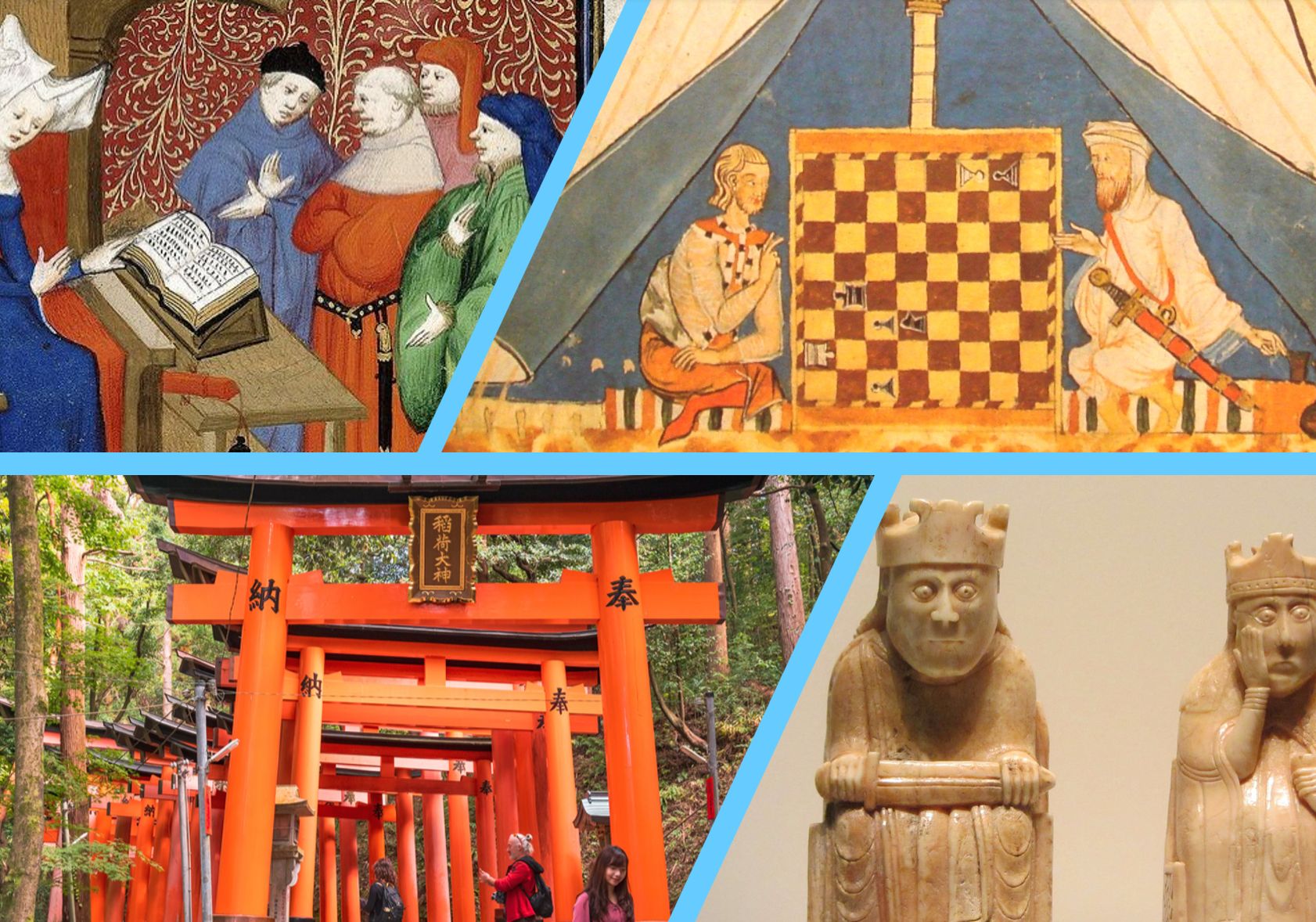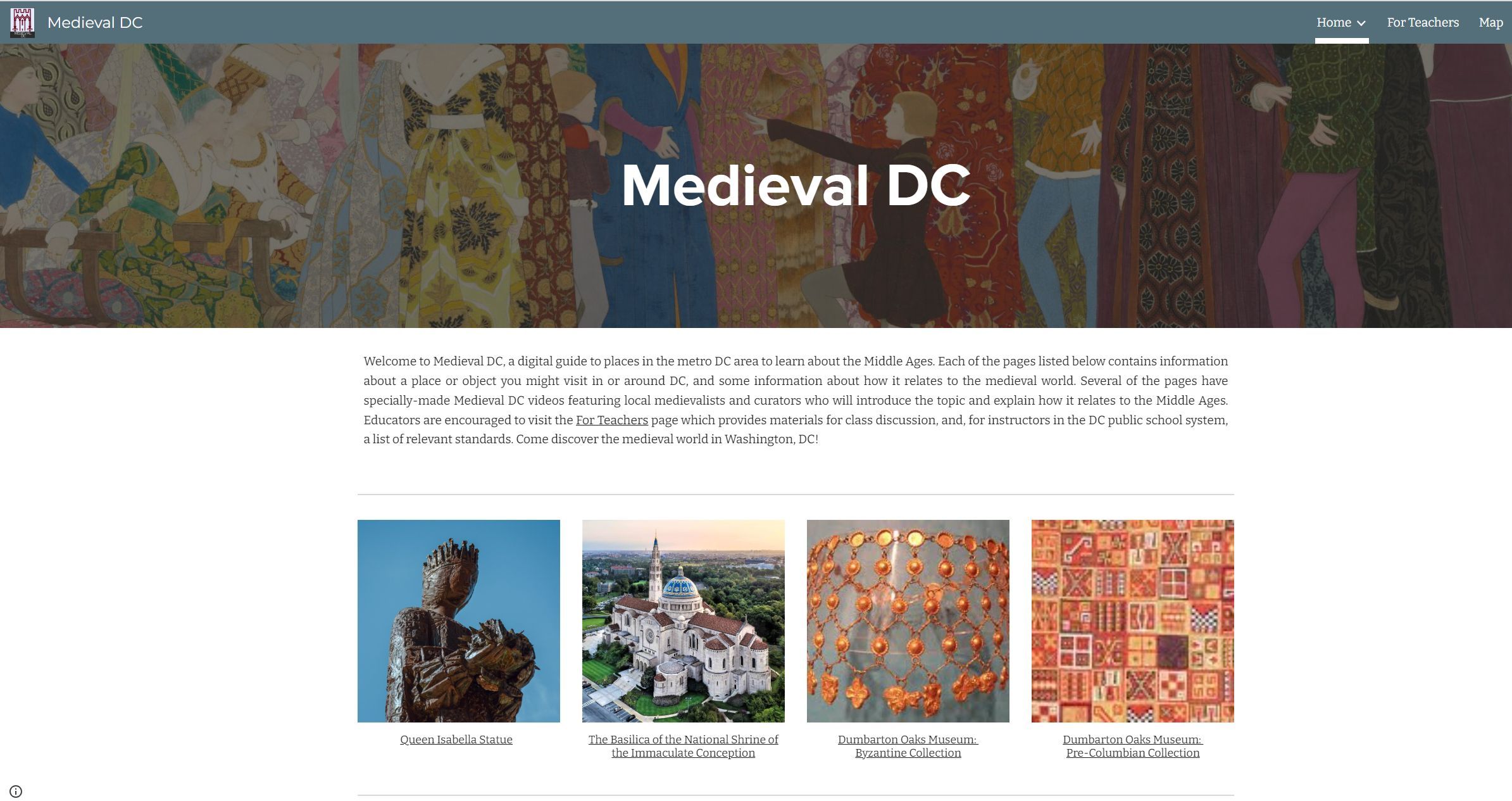
An expansive and diversified conceptualization of the Middle Ages
Researching and teaching the Middle Ages have deep roots here at the Catholic University of America, going back to its earliest days. The fourth Rector of the university, Bishop Thomas J. Shahan (1909-1927), for instance, joined the faculty in 1891 (only two years after the university opened) as a professor of canon and civil law, patristics, and Latin, remained a scholar “given to seeking ideals in the medieval past”, and was one of the very first group (in 1926) of Fellows elected to the Medieval Academy of America, the largest scholarly organization in North America promiting the study of the middle ages.[1] Things medieval have been (and remain) integral to many academic units across the campus, from Theology, Philosophy, and Canon Law, to languages and literatures in the Departments of English, Modern Languages, Greek and Latin, and Semitics, to the Centers for Medieval and Byzantine Studies and Early Christian Studies.
That tradition has remained remarkably constant. In addition to Shahan, eight other Catholic University medievalists (seven faculty, one alumna) – most recently, Katherine L. Jansen, Ordinary Professor of History (story here) – have been honored by election as Fellows of the Medieval Academy. Other past faculty gained prominence here and elsewhere while promoting medieval studies. For example, Elizabeth Kennan was a Professor of Medieval History at Catholic University (1966-1978) before becoming president of Mount Holyoke College, and she was instrumental during her time on our campus in securing the Mellon Foundation grant that helped establish the interdisciplinary Center for Medieval and Byzantine Studies at Catholic University in 1969.
Nowhere is this dedication to the Middle Ages more true than in the Department of History, and likewise its dedication to scholarly excellence. Fr. John Lynch, Fr. George Dennis, and Dr. Uta-Renate Blumenthal formed the core of the medieval program in History for many years. In the last 15 years, the faculty presently comprising the medieval section have produced nine books, and been awarded fellowships by Dumbarton Oaks, the John W. Kluge Center (Library of Congress), the American Academy in Rome, the Institute for Advanced Study at Princeton, and the American Council of Learned Societies.
The medieval faculty regard their engagement with graduate students in the field as not simply instructional, but also as an apprenticeship of professionalization in the ways of the academy. As one example: the Medieval Academy held its 2023 annual national meeting on 23-26 February in Washington, D.C., jointly hosted by a consortium of D.C.-area universities (of which we were one), and Jennifer Davis, Associate Professor of History, was the conference’s co-chair. The meeting provided the opportunity for our graduate students to serve as volunteer organizers, to see academic conferences from within as well as to be immersed in the field of medieval studies at the forefront of current research.

Some of our medieval graduate students at the 2023 national conference of the Medieval Academy of America.
Marirose Osborne, a second-year M.A. student in medieval history, comments: “I was one of the graduate students who volunteered at the MAA. We assisted in setting up, helping attendees check in, and just generally being there in a support role. We also had the opportunity to attend panels, make connections, and take part in the various social events at the conference. I was able to meet and listen to the work of some fantastic scholars, which I felt was a really enriching experience. We discuss conference presentations and research quite a bit in coursework, so it was fascinating to see that play out in real time and to discuss the process with experienced scholars."

Medieval DC website (access it here)
An initiative related to the Medieval Academy meeting is “Medieval D.C.” an interactive, web-based digital history project that highlights experiences in the Washington area related to the Middle Ages (story here). The project was co-directed by Professor Davis and Dr. Laura Morreale, was fully funded by Humanities DC (the humanities council of the District of Columbia, an affiliate of the National Endowment for the Humanities), and was conceived as a resource partly for educators, a kind of hands-on classroom to teach the Middle Ages. Mikkaela Bailey (an ABD doctoral candidate in the Department of History) served as project administrator: she reflects “This project was a one-of-a-kind opportunity for a student like me, and I’m so grateful to have been part of it.” Medieval DC was particularly conceived as a representation of a global vision of things medieval, with entries relating to the National Museum of African Art and the National Museum of Asian Art.
A further recognition of the university’s strength in medieval studies was the appointment of Professor Jansen as Editor of the Medieval Academy’s journal, Speculum, in 2019 (story here). The relocation of the journal’s editorial offices to our campus opened opportunities for our graduate and undergraduate students to work as interns or in editorial positions, another kind of apprenticeship to academic research and publication.
This integrative approach to graduate training in the Department has been self-evidently successful. In recent years two of our graduate students have been awarded Fulbright fellowships – Jon Paul Heyne (Ph.D. 2020) and Amos Bronner (ABD doctoral candidate) – and one received an American Academy in Rome prize – Austin Powell (Ph.D. 2020). Graduate students’ customary engagement continues: the next Medieval Academy conference (at Notre Dame in March, 2024) will feature a panel entirely comprised of three of our current medieval graduate students. But we choose to highlight in particular, in this issue of Connections, the careers of five of our graduate alumni who have established academic careers (literally) across the country: see the alumni profiles elsewhere in this newsletter for stories of the varied paths they have taken since their time as students here.
As does “Medieval D.C.”, the Department espouses an expansive notion of the “medieval”. The development of digital humanities approaches to research, teaching, and dissemination in recent years has made it essential to ground our students in this aspect of methodology, and so we have developed courses to teach the essentials of history in the digital age. Professor Davis and Dr. Morreale will teach a course in spring 2024 based upon the public-facing type of digital project represented by “Medieval D.C.” Lev Weitz (Associate Professor of History) and one of his undergraduate courses collaborated to produce a web-based story map on “The Islamic World in the Travels of Ibn Battutah (link here). L.R. Poos (Ordinary Professor of History) continues to offer digital mapping and GIS (Geographical Information Systems) based approaches to historical research as a regular part of his course rotation.
Though our focus in this issue has been mainly upon our graduate programs, innovative undergraduate courses in things medieval continue to be very popular at Catholic University. And these are quite wide-ranging: recent course offerings range from “Medieval Japan” and “The Mongol Empire: Fire and Silk across Eurasia”, to “Blood Feuds, Bishop-Saints, and a Sea Monster: The Merovingian Kingdoms” and ”Women, Sex, Gender in the Middle Ages, 1100-1500”, to “Muslims, Christians and Jews in the Medieval Mediterranean” and “Kings, Emperors, and Nobles: Power in the Global Middle Ages”, to the ever-well-enrolled course on the Crusades taught by Jennifer Paxton (Clinical Associate Professor of History and Director of the University Honors Program). Professor Weitz currently serves as the Director of the Islamic World Studies Program, and Professor Poos served recently as acting Director of the Asian Studies Program, just before receiving the provost’s award for overall excellence in teaching There is no lack of fascination with the Middle Ages among our 18-to-22-year-olds, as attested by the perennial popularity of "Medieval Day" every spring, with medieval music, crafts, re-enactors, human chess, and the eternally iconic trebuchet. It is a fascination we are delighted to foster and believe we are well suited to encourage.
In all these ways, the medieval section of the Department remains strong and vibrant, and we continually look for ways to make it even more so. It is, in fact, still in the middle of History.
[1] C. Josph Nuesse, The Catholic University of America: A Centennial History (CUA Press, 1990), 196.
